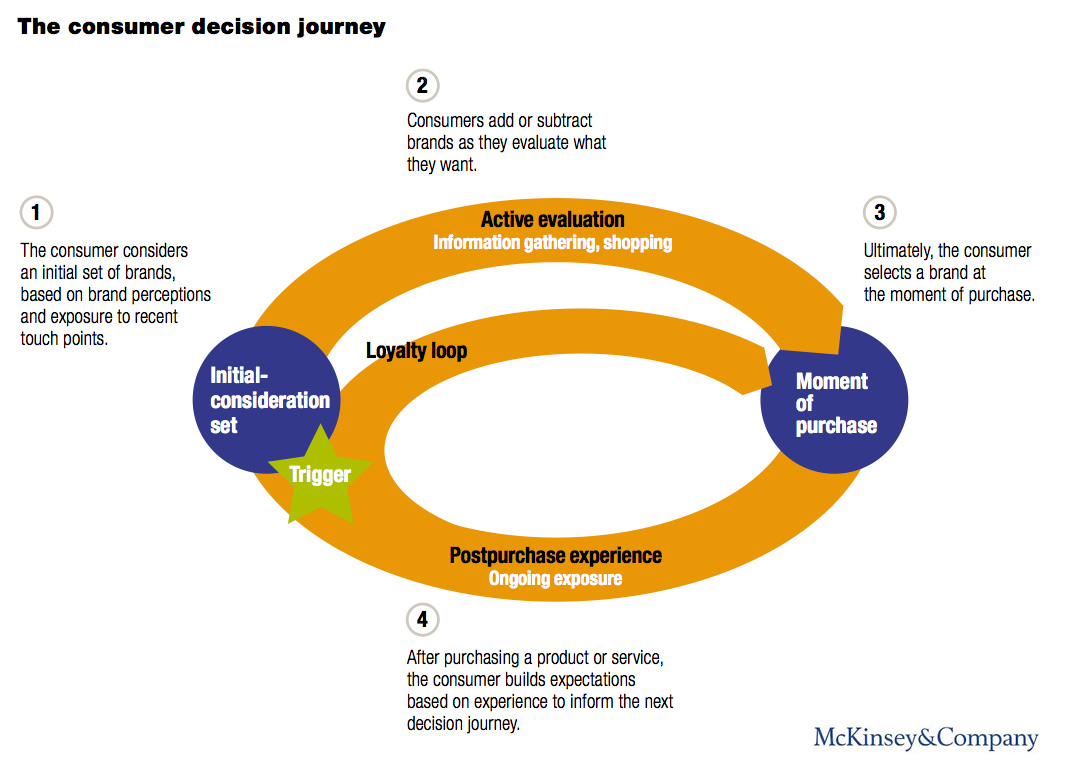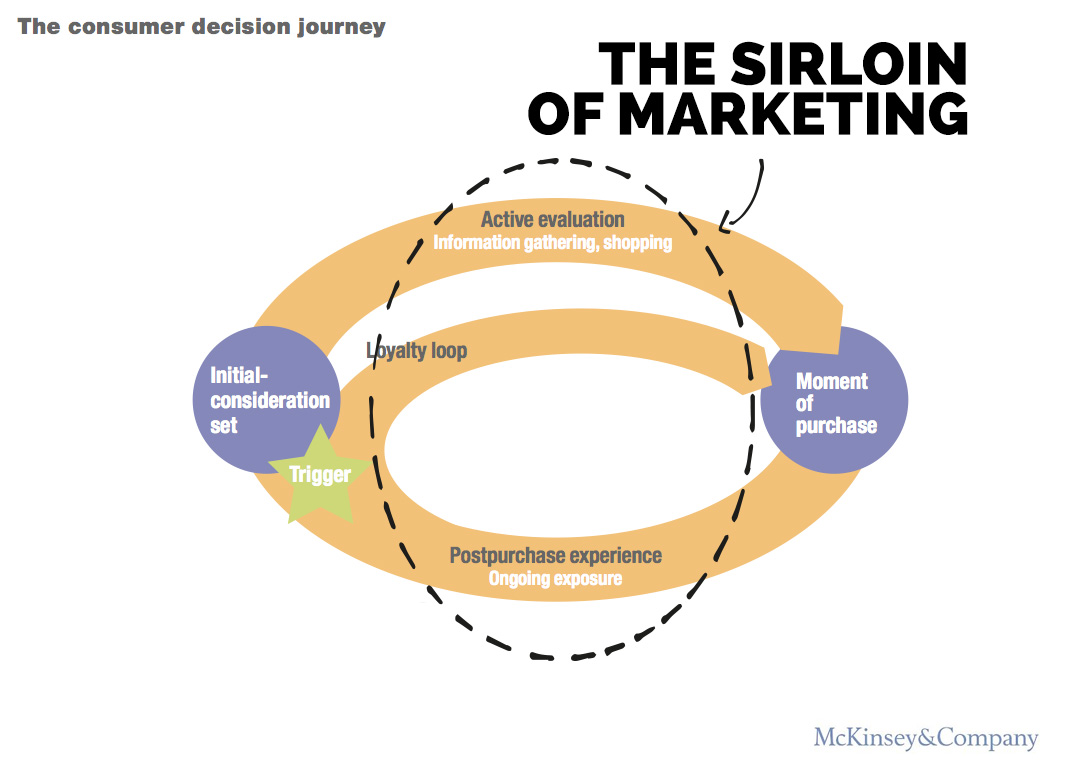New customer behavior turns one of the biggest hypes of marketing into marketers most important tool.
The purchase funnel is 116 years old according to Wikipedia.org. Making it an idea devised to understand consumer behavior before Ford invented mass-production, before societal change created mass-consumption, technology made mass-communication and the Internet democratized information. How, can this model still be in use, or even relevant?
Let me ask the question in a different way: How good are we really at understanding our customers?
(And do we care? The current failure rate of marketing and innovation suggests that this is a cost companies are willing to take, or are not aware that they are…)
In 2009 McKinsey released an article discussing the consumer decision journey (link). From researching thousands of customers across several industries and countries they came to the conclusion that the journey customers take to buy a product is dramatically different than the model presented in 1898. The implications would be both that companies have been investing their marketing dollars in all the wrong places, and that marketers have fundamentally misunderstood the grounds for which customers make their decisions – and in turn used the wrong incentives to promote action.
From this research McKinsey suggests that marketing potentially has allocated a lot of its resources in the wrong places: Traditional marketing invests most its money in the Consider phase and the Buy phase, where as McKinsey finds that there might be bigger opportunities found in the opposite parts of the journey – the new parts.
These new areas highlight important changes both in the way consumers navigate and the power of consumers as ambassadors:
– The Evaluation phase – where customers research products or categories in order to gain access to knowledge before making a decision.
– The Loyalty loop – acknowledging the value of product owner’s ability to market the product to themselves or their friends is found to be so important it deserves its own loop.
These two phases have become very important; the first where the consumer goes out into the world, be it physical or digital, searches for and acquires information and knowledge about the product or subject
. This behavior has now been empowered by the utility of the Internet and created a new breed of consumers: The Knowledgeable Customer – people who enter the purchasing phase with their decisions driven by knowledge and expertise. Who are not swayed in the same way by traditional communication, that plays heavily on personal preferences or emotional messaging.
The second phase introduces an even more radical change to funnel-thinking: Where the importance and value of a product owner’s ability to market the product to themselves or to their friends is of such value that the phase demands it’s own loop inside the first one. People as ambassadors cannot be labeled as merely social media or word-of-mouth, it is a powerful marketing tool on par with any other tool in the marketers toolbox.
And if that wasn’t enough, Don Peppers suggests in this article that these two phases go hand in hand: The knowledgeable customer is often also the biggest ambassador. (link)
These ideas have been affirmed in several other articles. In Branding in the Digital Age (HBR 2010) David C. Edelman writes that consumers today connect with brands in fundamentally new ways; often through media channels that are beyond manufacturers and retailer’s control. (This is not earned media, its more like having your product presented and sold on Amazon or fab.com)
Secondly, I
penile prosthesis may be associated with high rates ofand/or specialist generic viagra online for sale.
. Simonson and E. Rosen in the January-February 2014 issue of HBR references the role of online reviews. The authors claim that the importance of a brand name has diminished, that buyers in the past had limited access to knowledge about a product and therefore had to revert to personal preference or promises being given by the brand itself – this is not true anymore. The current customer has access to what the authors term “absolute value” – a rich, specific sense of what it’s like to own or use the goods they’re considering.
“We believe that many companies need to dramatically shift their marketing strategies to account for the rising power exerted on future customers by the opinions of existing customers”. – I. Simonson and E. Rosen
From all of this we can read that The Knowledgeable Customer has become the most valuable customer in several industries (to be clear on this – nobody is suggesting that knowledge is key to decision making in all categories).
But, I’d like to push this idea even further; and say that the phase where the consumer searches for knowledge and information, and the phase where they as owners act as ambassadors is the sirloin part of marketing today.
The new tool
The traditional tools of marketing are good at marketing to the old parts of the journey (both ends of the funnel), but they lack the design, accommodation and opportunity to be the vehicles for what the customer seek in the sirloin part. For this job the tool is none other than content marketing.
Marketers have to understand the tools of marketing from the perspective of the customer – what behavior is the tool designed to accommodate? From this vantage point traditional marketing is about short form messaging adoring to the customers personal preferences or emotions, while content marketing is large format containers facilitating knowledge and insights through information – enabling consumers to become knowledgeable and share this knowledge.
The Consumer Journey has changed, there has emerged a class of Knowledgeable Customers which new behaviors (the Sirloin of Marketing) are perfectly accommodated by rich, insightful Content Marketing tools and thinking.



